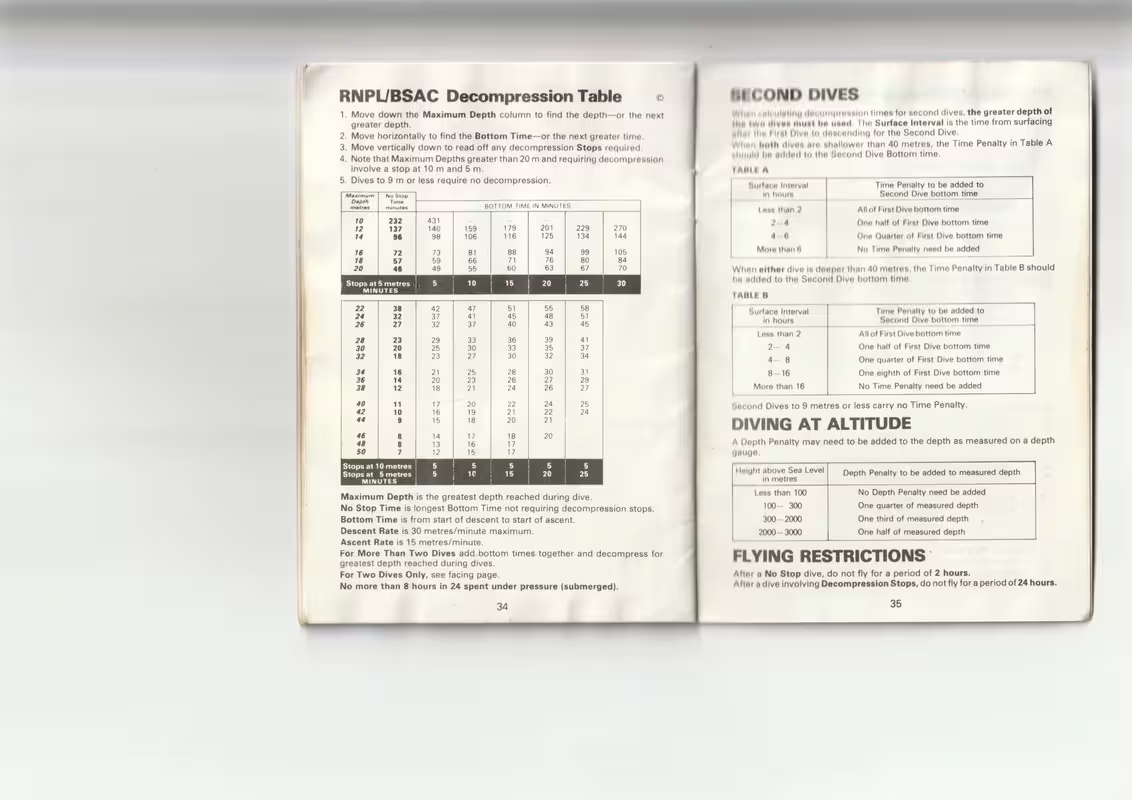Blackcrusader
Contributor
Prior to 1988 most recreational divers generally used either the US Navy or British Navy dive tables. Again, it worked well if used conservatively. Lots of old divers can testify to this. All of a sudden, we have these Buhlmann dive computers with GF. According to the experts, It's supposed to make no decompression limit (NDL) recreational diving easier and safer. I am not convinced.
My question, why does a recreational diver who executes NDL 60ft or perhaps the odd 100ft dive, require GFs. Even if they are on multilevel or multiday dives. If you want to make recreational diving safer, keep it simple (KIS principle). KIS will never be outdated.
I did my OW and BSAC Sports diving 86 -88 so used older tables I did not have the BSAC 88 tables.
Later on did Nitrox and Padi Rescue. When I go on dive vacations I willl often do 10 or more straight diving days of 3 or 4 dives a day. I was using a Suunto with RGBM for a time until the pressure sensor failed in 2018. I had several hundred dives logged but when I bought a new laptop after a hard drive failure lost those logs. No big deal really.
Anyway I saw 6 instructors / technical divers on a dive boat wearing Perdix. When I saw how easily they could be seen when diving I asked them about the Perdix. The all stated was a great DC. I told them I would buy one as my Suunto had just died. They all agreed it was a great DC for me even as a recreational diver. I have not been happier as a diver than with my Perdix and yes GF's. I would recommend Shearwater / Garmin to anyone who wants to have a great DC. I see many vacation divers who dive with no DC and just depend on their guide or dive buddy. Do vacation divers even need a DC one could ask? After all I started diving when we used a watch and did tables.
Should we ignore features like GF99 and SurfGF? They are not required either but I love that I have that information on my Perdix. The real issue is that many divers buy a DC and do not really understand its features and settings. The issue is not using a DC with GF's but not taking the time to study up on them and how it benefits a diver.
For multilevel NDL diving over many days is a DC with RGBM (Reduced Gradient Bubble Model) better than a DC using Bühlmann and gradient factors? My Suunto was too limiting for me. Glad it died and I bought the Perdix. BTW most recreational dives I do start with dives to 30m unless there is a seabed that prevents deeper diving.. Around one third of my dives I will do 30m to 40m ( sometimes deeper ) on most dive vacations. If you watch the video posted by Dr Simon Mitchell and the studies done he decided to dive GF over RGMB models.
So a diving technical doctor who does research has valid reasons for using GF's. Yes he is a saturation diver which I am not. But it seems that using GF factors gives one safer diving as you are not doing deep stops as much where you are still on gassing.





